Inti Punku observatory, is located 9 km from the Ollantaytambo district, Urubamba province, approximately 60 km northwest of the city of Cusco. It is located at an altitude of 3900 meters above sea level, in the picturesque town of Cachiccata at (3800 meters above sea level). Inti Punku or Intipunku, a Quechua word, which translates as “Sun Gate”. From this door you can see The Verónica Mountain (5800 m.a.s.l.) or Wakay Willka or “Sacred Tears” or “Young Mountain”. Which is one of the most important snow-capped peaks in Inca times and today. Would you like to know a little more about this amazing place?
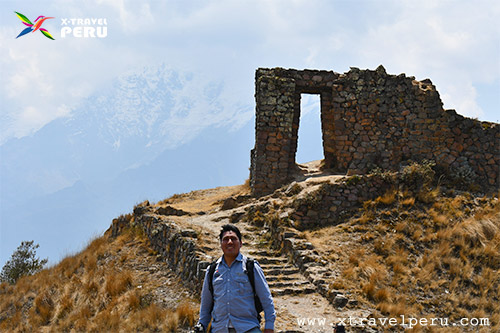
INTI PUNKU OBSERVATORY: “THE GATE OF THE SUN OR GATE TO HEAVEN”
While we make the trip to Inti Punku we can find on the way the famous tired stones of Cachiccata, since they were being transferred from the quarries for the construction of the Archaeological Center of Ollantaytambo. We also find the enigmatic Chullpas built by the Incas to bury their deceased. As part of the wonderful natural landscape we find a variety of flora (Chachacomas, Queuñas, etc.). Fauna (vizcachas, deer, puma, Andean fox, hummingbirds and the amazing Andean condor).
The charming town of Cachiccata also has great cultural wealth, as it maintains its traditions and customs. It shows us what the life of the high Andean man is like, when they grow their food and wear typical costumes of the area.
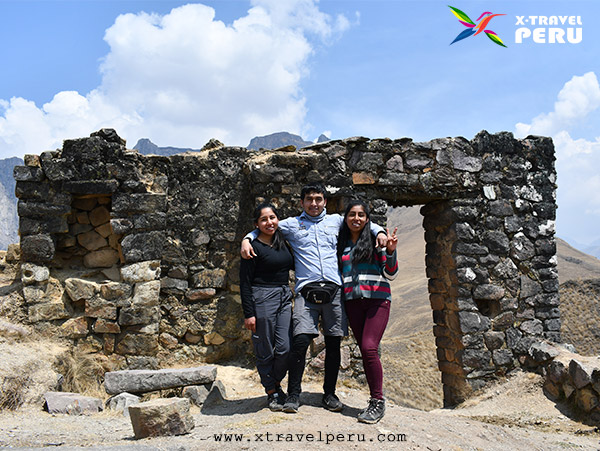
LEGEND OF INTI PUNKU OBSERVATORY
The enigmatic Inti Punku, our elders say, was an inter-dimensional door, which connects with other worlds through a ritual known only to a select few (Willaq Umu). They say that the wise Inca priests traveled to other worlds in search of knowledge and contact with other beings. They also managed to transport themselves between the empire between the inter-dimensional gates that existed throughout the Inca territory. An example of this is the Inti Punku located in the Llaqta of Machu Picchu. In short, stories that prevail in the memory of young and old of the place, and that invite you to visit this magical place!
INTI PUNKU OBSERVATORY CLIMATE
The climate of Inti Punku varies from 15 to 20 degrees Celsius. During the walk, the climate varies as it passes through a temperate climate of the sacred valley and then changes to a cold climate of the mountains.
INCA ASTRONOMY
Inca empire had great knowledge about astronomy, since they influenced religion, agriculture, location of towns, etc. The wise priests studied the Milky Way known as “Hatun Mayu” in Quechua (official language of the Incas) for agricultural and religious purposes. The Incas knew very well the constellations and pleiades, building an agricultural and religious calendar. First in the agricultural calendar, they determined if the year would be prosperous, when to sow, what to sow, etc. Second in the religious calendar, the main religious festivals were shown in honor of their deities (sun, moon, stars, etc.).
All Inca constructions are related to astronomy. In the case of Inti Punku, because it was on the heights, it had the function of an astronomical observatory. For example, observing the sun they determined the solstices and equinoxes.
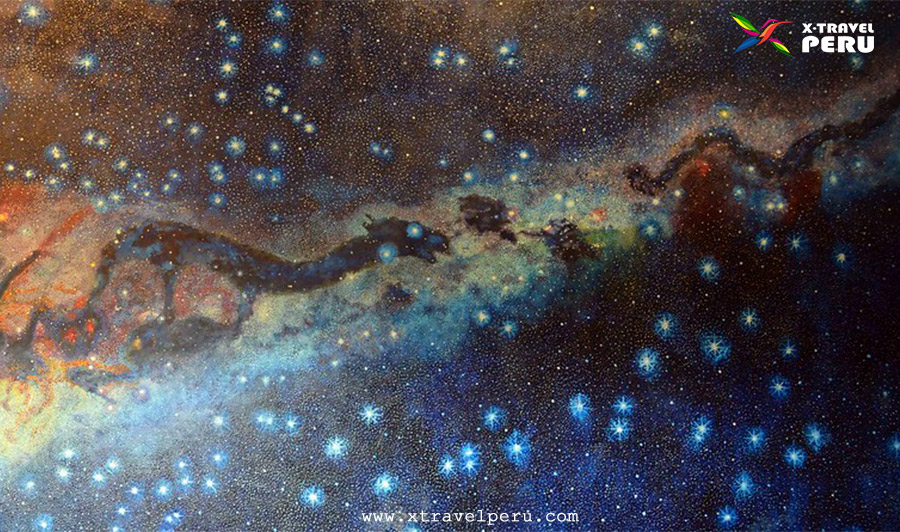
LA VERONICA MOUNTAIN
When you find yourself in the place and you begin to enjoy immense peace, you will be able to observe the imposing Verónica snow capped mountain. In times past it was known as Wakay Willka “Sacred Tears” or Wayna Willca “Young Mountain”.
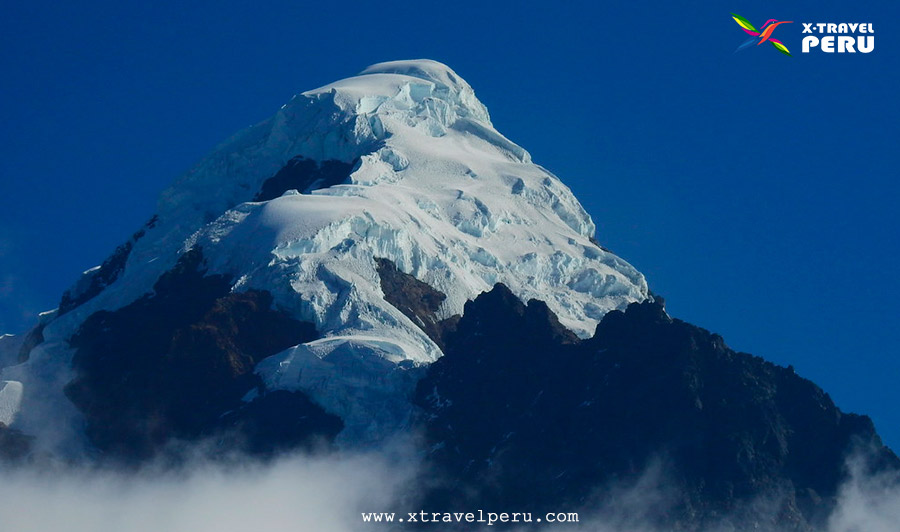
The story of the two Cuzco brothers Salkantay and Ausangate who venture down different paths in search of saving their people from an incessant drought. On the one hand, Salkantay went north and found the jungle and there the legend of the impossible love with Nevado Verónica. Salkantay leaving Qosqo, arrived in the land of the Antis, where he meets the young and beautiful princess Wakay Willka. The two young men knew love the instant their eyes met.
But the Antis condemned that pure love and drove the young Salkantay from their lands. Faced with such a situation, the two lovers decided to flee to the Qosqo Valley, where they could cultivate their love together, immediately the Antis began a persecution of the couple to the peaks of the Andes mountain range, where they sacrificed their own princess. , preferring her dead than in the arms of the unwanted Salkantay.
The Cusco warrior, furious at the death of his beloved, began a fierce fight against the Anti people, whom he completely exterminated. The gods, faced with such a situation, decided to turn Salkantay into a mountain, so that it would not do more harm to men and shed no more blood, it could feed its people and take care of Wakay Willka, which was also converted into a mountain and today today it is known as Veronica.
CACHICCATA COMMUNITY
Cachiccata in Quechua “Sal slope”. It is a cozy town in the mountains, which houses 80 families who live mainly from agriculture, maintaining the customs of yesteryear. In the area, Community Rural Tourism is carried out, where the community members exchange their knowledge with visitors and share their knowledge jealously guarded for centuries.
QUARRY OF CACHICCATA
On the way to Inti Punku, you will see the Cachiccata quarries, which is one of the impressive examples of Inca engineering. It is said that, from this rock mine, the stones were carved and transferred to the archaeological center of Ollantaytambo with extraordinary pushing and rolling techniques. As a result, in the area you can delight your eyes with the famous tired stones, carved in a unique way.
The quarry has three important attractions:
- MOLLE PUCRO, is considered the most accessible and popular quarry.
- SIRKUSIRKUYOC, shows evidence of having continued operation when the Spanish invaded the territory, it is said to be the largest in the place.
- KANTIRAYOQ O CACCHICATA, where the extraction of minerals and precious stones was carried out.
ALSO WE KNOW ABOUT CACHICCATA
From the Cachiccata quarry, the pink diorite was extracted, it is constituted first by salt and second by pink quartzite (15%). That it was for the Incas because it was a sign of good omen and prosperity, so most of them were used for the construction of the main temples for their gods.
In the place there are also constructions, called by the locals as Choquetacarpo, which were to house the Inca nobles and priests who came to the area to verify and perform rituals.
In the Cachiccata quarries, you can see 2 paths, a first path that is considered part of the Inca trail or Qapaq ñan that is directly connected to Ollantaytambo and in ancient times it was used to move the cut and carved rocks through pushing techniques and bearing. A second road that was used by the men who worked tirelessly in the place and this was connected to the small town of Cachiccata.
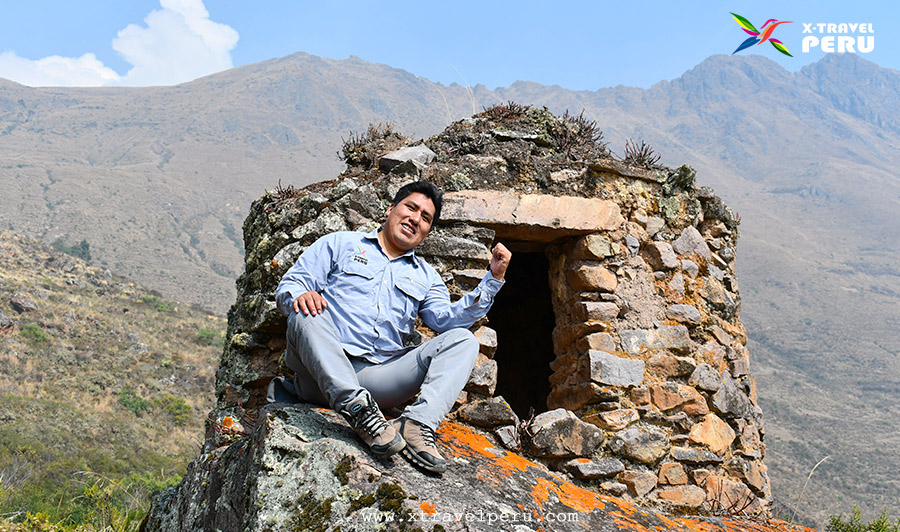
CACHICCATA CHULLPAS
The Chullpas were Inca and Aymara constructions in the form of towers with a circular base, in some cases they were built with stone or earth (adobe), which had the function of housing people of lineage (Mallcus) and importance within society. The main objective of the Chullpas was to preserve the bodies of the deceased so that they would be venerated by their people and to remember the immense power they had in life and even dead they continued to exercise their government.
Also the chullpas of Cachiccata, located very close to the quarries, are stone-based constructions in the form of small circular-based towers that had the function of housing the pre-Hispanic deceased inside. They are extraordinary because the construction was carried out on top of large rocks. They are considered places of worship and the inhabitants of the area still respect them.
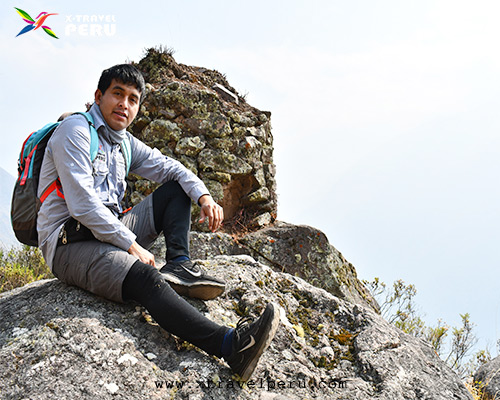
WHY VISIT INTI PUNKU OBSERVATORY?
Inti Punku, is a unique attraction, since it combines nature, adventure and culture. When taking the tour, one can leave behind the routine and sedentary life of the cities for a day, making our senses enjoy nature and the wonderful landscapes to see and hear the birds chirping; In addition to being an excellent way to connect with yourself in the heights with a look at the great Veronica and oxygenate the lungs with fresh and pure air. Sometimes you have the caress of the clouds on your face, something extraordinary and very difficult to miss.
WHAT IS THE BEST TIME OF THE YEAR TO VISIT INTI PUNKU OBSERVATORY?
The best season to take the Inti Punku tour is in the months of April to November, since the rainfall is minimal in the area. In case you visit in the rainy months it is necessary to bring the corresponding equipment for a better enjoyment, but it should be noted that each season has its charm and beauty.
ARE THERE TOURS TO INTI PUNKU OBSERVATORY?
In the city of Cusco there is the option to do the tour in 1 day (full day) called TOUR INTI PUNKU FULL DAY, which takes a tour of incomparable high Andean landscapes with their wonderful flora and fauna, a view of the majestic Verónica snow-capped mountain, to the extraordinary Inti Punku, the Cachiccata quarry and the enigmatic Chullpas. It is a tour that you must take!
Book your tour here with the authorized agency X TRAVEL PERÚ.
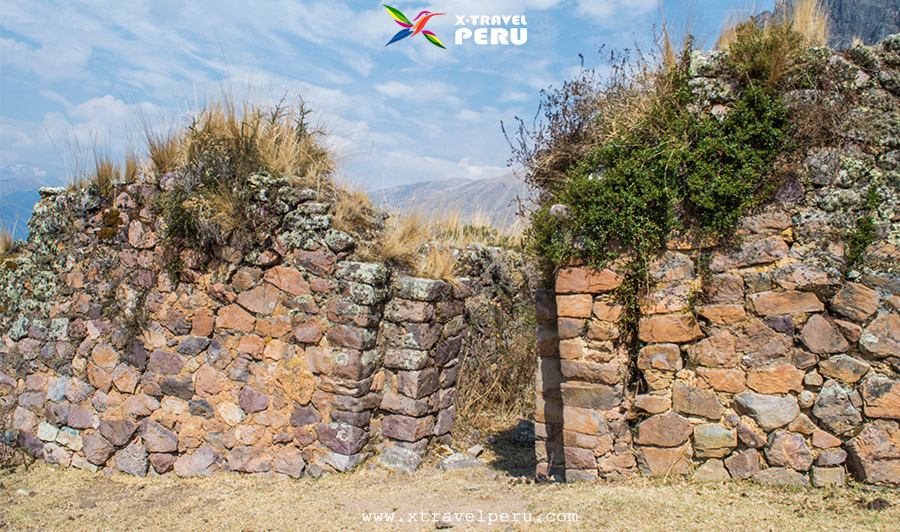
WHAT ELSE DOES INTI PUNKU OBSERVATORY OFFER?
On the Inti Punku tour, you will also enjoy the friendly treatment of the local inhabitants and their exquisite cuisine. Likewise, you will enjoy the scenic beauty of the place and an exceptional view of the Sacred Valley of the Incas from above.
HOW TO GET TO INTI PUNKU
To get to Inti Punku from the city of Cusco, the route is made by road to the Ollantaytambo district with a duration of 2 hours. Immediately it is diverted by carriage trail for 20 minutes to the community of Cachiccata. Where a walk will begin for approximately 3h30 min visiting on the way the Cachiccata quarries, the chullpas and Inti Punku, for which a good physical condition is required. The duration of the hours may vary according to the age, gender and physical condition of the passenger, and according to the type of service you choose (private tour or group tour).
There are two ways to visit Inti Punku, firstly, through Travel Agencies, to avoid countless cumbersome details. Second, you can go on your own, but it is advisable to always go in a group or more than one person to avoid setbacks.
IT IS RECOMMENDED FOR CHILDREN AND THE ELDERLY
The Inti Punku tour, in the case of children it is recommended that they be over 10 years old to enjoy the tour in a better way. In the case of taking minors with them, it is advisable to bring one more person for their care. On the other hand, in the case of older adults it depends on the physical condition of the person.
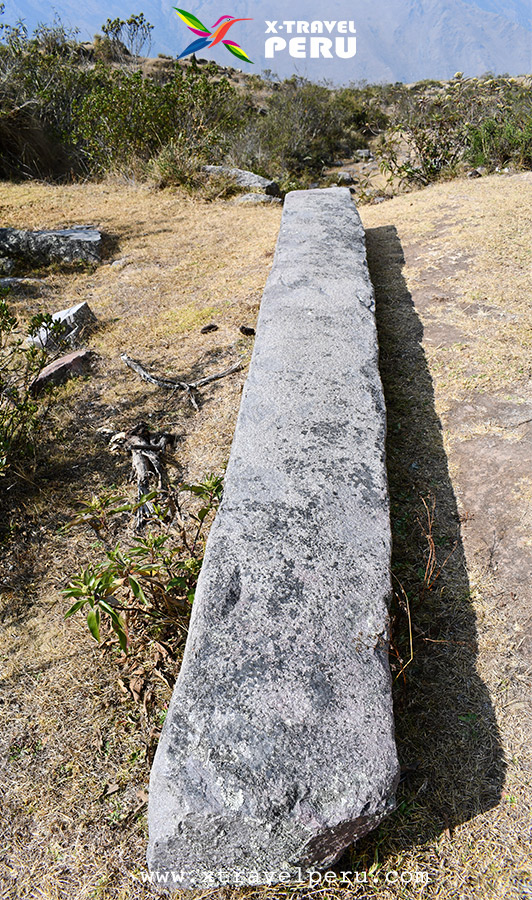
ARE THERE DISCOUNTS AND PROMOTIONS FOR THE INTI PUNKU TOUR?
The discounts that we offer you and you can take advantage of are in Cusco festivals, national holidays or anniversary of our agency “X TRAVEL PERU”.
We also have discounts for large groups of schools, colleges, institutes and universities.
Discounts on group trips for parties of 15 years.
If within the family group that wishes to visit Inti Punku, there is a member who has a birthday will have a considerable discount.
Discounts for large groups.
RECOMMENDATIONS TO VISIT INTI PUNKU
- If you want to visit the Inti Punku, the best thing to do is go through a Travel Agency of your choice. In order to avoid times and bad times, since, if you go on your own, instead of enjoying
- everything wonderful about the route, you will be restless about transportation, food or other inconveniences.
- For a pleasant walk, it is advisable to acclimatize in Cusco or another place at an altitude similar to that of Cusco for at least 1 to 2 days, so as not to suffer from the well-known altitude sickness.
- Wear trekking clothing to feel cool when it’s hot and warm when it’s cold.
- We recommend that you bring a hat, sunscreen, sunglasses, and rain ponchos in case we have rain.
- Carry a light backpack with snacks such as fruits, a bottle of water, cookies, nuts, candies, etc.
- It is recommended to stay hydrated, drink at least two or three liters of water per day.
- This tour is recommended for people who have adequate physical conditions, due to the duration of the walk and the conditions of the road.
- Bring your personal documents and extra money in soles with you for any activity that occurs.
- In times of pandemic it is necessary to always have your mask and face shield.
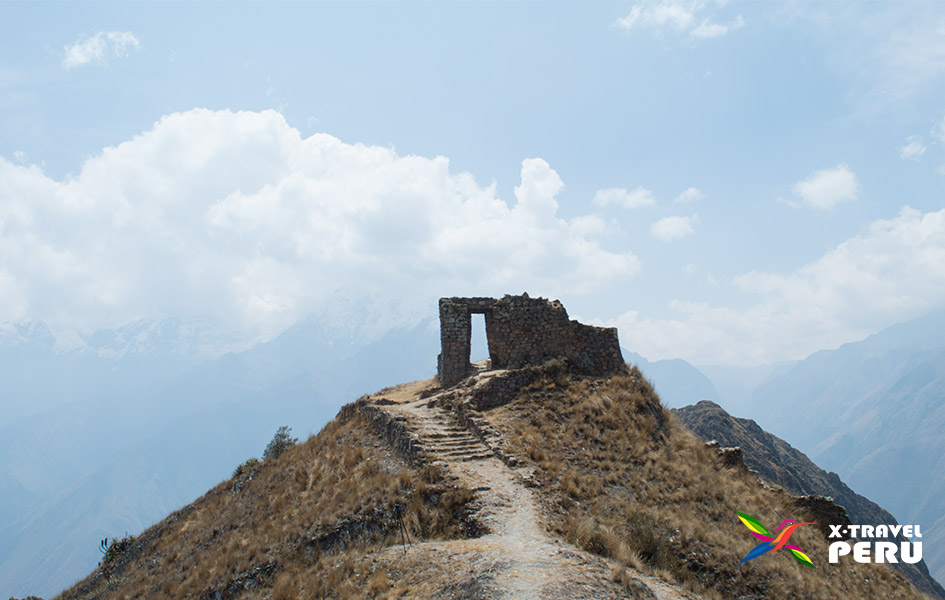

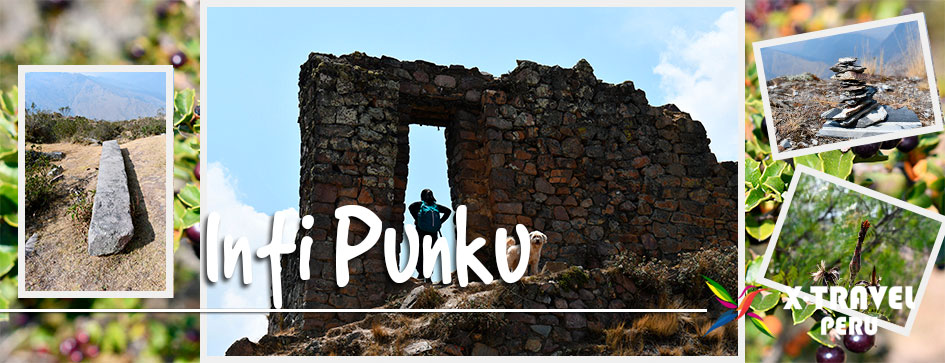

Leave a Reply